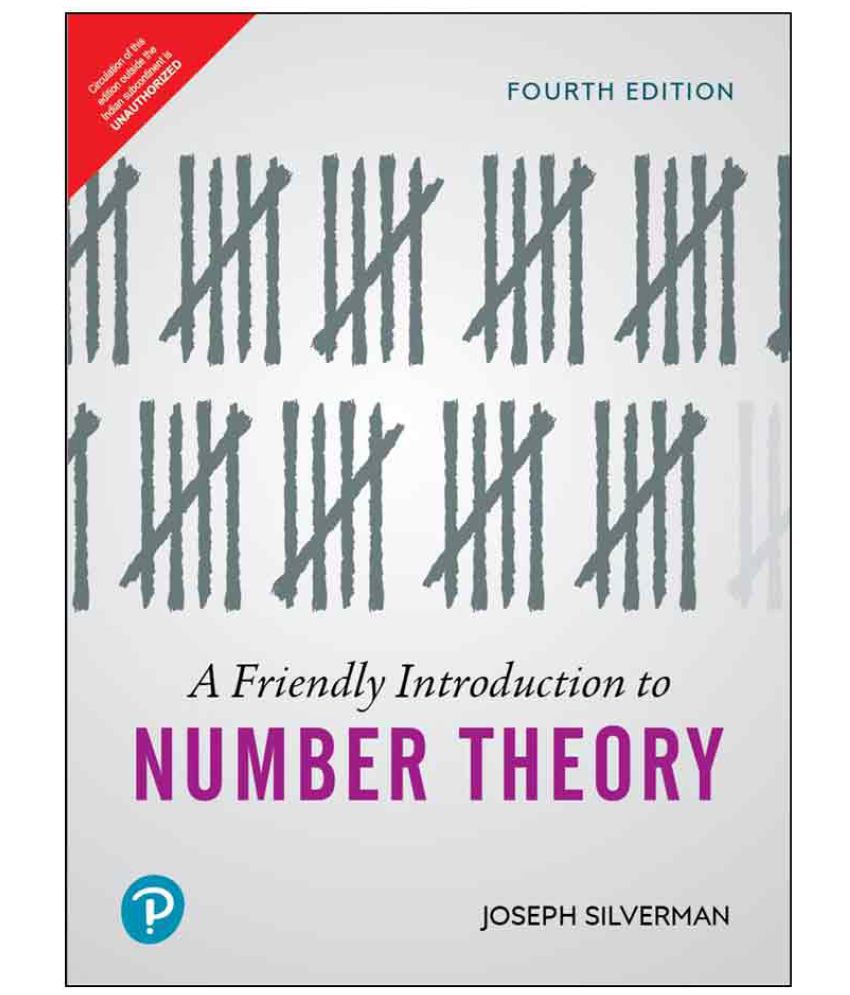Something went wrong. Please refresh the page and try again.
Something went wrong. Please refresh the page and try again.
Notifications can be turned off anytime from settings.
Item(s) Added To cart
Qty.
Something went wrong. Please refresh the page and try again.
Something went wrong. Please refresh the page and try again.
Exchange offer not applicable. New product price is lower than exchange product price
Please check the updated No Cost EMI details on the payment page
Exchange offer is not applicable with this product
Exchange Offer cannot be clubbed with Bajaj Finserv for this product
Product price & seller has been updated as per Bajaj Finserv EMI option
Please apply exchange offer again
Your item has been added to Shortlist.
View AllYour Item has been added to Shopping List
View AllSorry! A Friendly Introduction to Number Theory | Fourth Edition | By Pearson is sold out.


You will be notified when this product will be in stock
| ||||||||||||||
A Friendly Introduction to Number Theory, 4th Edition is designed to introduce students to the overall themes and methodology of mathematics through the detailed study of one particular facet–number theory. Starting with nothing more than basic high school algebra, students are gradually led to the point of actively performing mathematical research while getting a glimpse of current mathematical frontiers. The writing is appropriate for the undergraduate audience and includes many numerical examples, which are analyzed for patterns and used to make conjectures. Emphasis is on the methods used for proving theorems rather than on specific results.
Table of Contents:
Chapter 1: What Is Number Theory?
Chapter 2: Pythagorean Triples
Chapter 3: Pythagorean Triples and the Unit Circle
Chapter 4: Sums of Higher Powers and Fermat’s Last Theorem
Chapter 5: Divisibility and the Greatest Common Divisor
Chapter 6: Linear Equations and the Greatest Common Divisor
Chapter 7: Factorization and the Fundamental Theorem of Arithmetic
Chapter 8: Congruences
Chapter 9: Congruences, Powers, and Fermat’s Little Theorem
Chapter 10: Congruences, Powers, and Euler’s Formula
Chapter 11: Euler’s Phi Function and the Chinese Remainder Theorem
Chapter 12: Prime Numbers
Chapter 13: Counting Primes
Chapter 14: Mersenne Primes
Chapter 15: Mersenne Primes and Perfect Numbers
Chapter 16: Powers Modulo m and Successive Squaring
Chapter 17: Computing kth Roots Modulo m
Chapter 18: Powers, Roots, and “Unbreakable” Codes
Chapter 19: Primality Testing and Carmichael Numbers
Chapter 20: Squares Modulo p
Chapter 21: Is -1 a Square Modulo p? Is 2?
Chapter 22: Quadratic Reciprocity
Chapter 23: Proof of Quadratic Reciprocity
Chapter 24: Which Primes Are Sums of Two Squares?
Chapter 25: Which Numbers Are Sums of Two Squares?
Chapter 26: As Easy as One, Two, Three
Chapter 27: Euler’s Phi Function and Sums of Divisors
Chapter 28: Powers Modulo p and Primitive Roots
Chapter 29: Primitive Roots and Indices
Chapter 30: The Equation X4 + Y4 = Z4
Chapter 31: Square–Triangular Numbers Revisited
Chapter 32: Pell’s Equation
Chapter 33: Diophantine Approximation
Chapter 34: Diophantine Approximation and Pell’s Equation
Chapter 35: Number Theory and Imaginary Numbers
Chapter 36: The Gaussian Integers and Unique Factorization
Chapter 37: Irrational Numbers and Transcendental Numbers
Chapter 38: Binomial Coefficients and Pascal’s Triangle
Chapter 39: Fibonacci’s Rabbits and Linear Recurrence Sequences
Chapter 40: Oh, What a Beautiful Function
Chapter 41: Cubic Curves and Elliptic Curves
Chapter 42: Elliptic Curves with Few Rational Points
Chapter 43: Points on Elliptic Curves Modulo p
Chapter 44: Torsion Collections Modulo p and Bad Primes
Chapter 45: Defect Bounds and Modularity Patterns
Chapter 46: Elliptic Curves and Fermat’s Last Theorem
Chapter 47: The Topsy-Turvey World of Continued Fractions [online]
Chapter 48: Continued Fractions, Square Roots, and Pell’s Equation [online]
Chapter 49: Generating Functions [online]
Chapter 50: Sums of Powers [online]
About the Author
Joseph H. Silverman is a Professor of Mathematics at Brown University. He received his Sc.B. at Brown and his Ph.D. at Harvard, after which he held positions at MIT and Boston University before joining the Brown faculty in 1988
The images represent actual product though color of the image and product may slightly differ.
Register now to get updates on promotions and
coupons. Or Download App